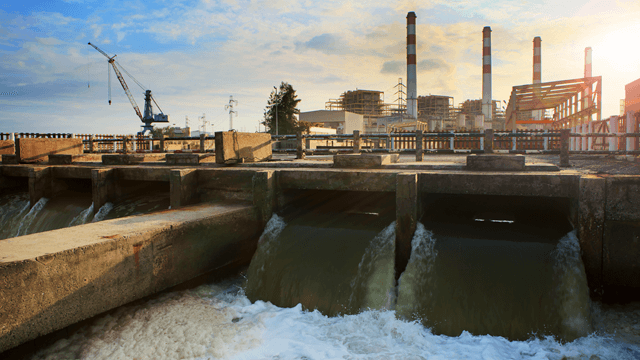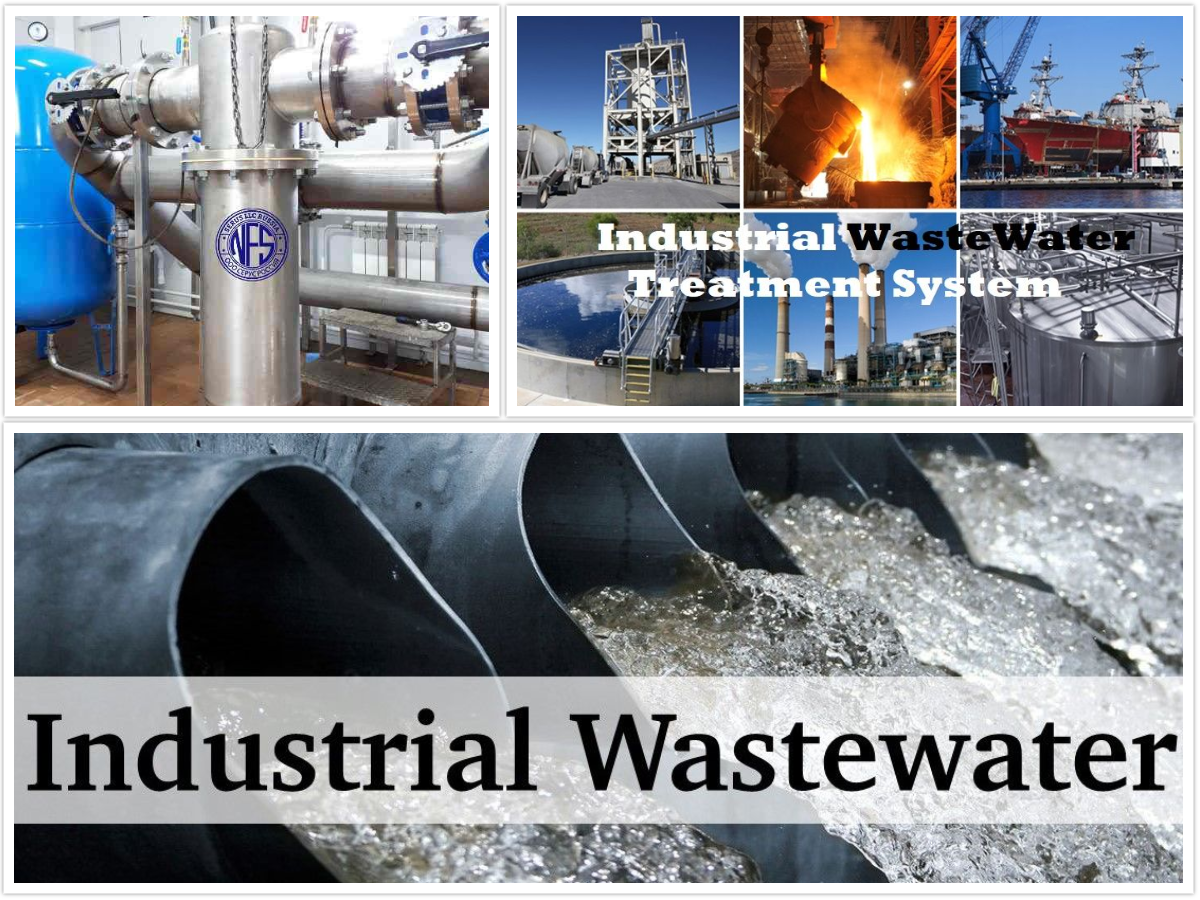Industrial Waste Water Treatment-- Protect the Setting with Expert Water Treatment Solutions
Wiki Article
Trick Techniques in Industrial Waste Water Therapy Procedures
The treatment of industrial wastewater is a critical aspect of environmental management, including a range of techniques designed to reduce the effect of pollutants. Developments in innovations such as membrane layer purification and progressed oxidation processes offer ingenious options for boosting treatment effectiveness.Physical Therapy Methods
Exactly how efficiently can physical treatment approaches deal with the complexities of industrial wastewater? Physical therapy methods play a crucial role in the preliminary phases of wastewater monitoring, concentrating primarily on the removal of solids and large particulates. Techniques such as filtration, sedimentation, and flotation are essential for decreasing the concentration of suspended solids, thus boosting the efficiency of succeeding therapy procedures.Sedimentation includes the gravitational settling of solids, permitting the separation of larger products from the wastewater. This technique is specifically efficient in clarifying water before organic or chemical therapies. Filtering, on the various other hand, uses various media to capture particulate issue, making sure that smaller impurities are removed. This technique can be customized to accommodate various kinds of industrial effluents, producing more clear effluent streams.
Furthermore, flotation protection techniques, which utilize air bubbles to raise suspended solids to the surface area for removal, are reliable in treating wastewater with high focus of fats, oils, and greases. On the whole, physical treatment approaches work as a vital very first step in the comprehensive administration of commercial wastewater, making sure that the load on subsequent therapy stages is lessened and boosting overall treatment effectiveness.
Chemical Treatment Strategies
While physical therapy methods lay the groundwork for effective wastewater administration, chemical treatment strategies are necessary for dealing with the more complicated contaminants usually discovered in commercial effluents. These techniques utilize various chemical representatives to precipitate, reduce the effects of, or oxidize unsafe compounds, ensuring a much more extensive removal of pollutants.
One typical strategy is coagulation and flocculation, where chemical coagulants such as aluminum sulfate or ferric chloride are included in promote the gathering of suspended bits. This procedure boosts solid-liquid splitting up, decreasing turbidity and boosting water quality. Furthermore, neutralization processes are employed to adjust the pH of wastewater, utilizing bases or acids to counteract acidic or alkaline streams, respectively.
Oxidation-reduction reactions play an important role in degrading natural impurities and microorganisms. Chemical oxidants like hydrogen, ozone, or chlorine peroxide are made use of to damage down intricate natural substances, making them less unsafe or more naturally degradable. Advanced oxidation processes (AOPs) combine several oxidation strategies to improve contaminant removal effectiveness.
Biological Therapy Procedures
The effectiveness of wastewater treatment is considerably enhanced by biological therapy procedures, which harness the all-natural metabolic activities of bacteria to disintegrate natural issue and get rid of toxins. Industrial Waste Water Treatment. These procedures mostly entail aerobic and anaerobic food digestion, each customized for certain kinds of wastewaterCardio therapy procedures use oxygen to support microbial growth, promoting the malfunction of organic pollutants into co2 and water. Usual approaches consist of activated sludge systems, where aeration tanks assist in the mixing of wastewater with microorganisms, and flowing filters, which urge biofilm advancement on media surface areas.
Conversely, anaerobic treatment procedures happen in the lack of oxygen, using anaerobic bacteria to decay natural matter, leading to biogas production, a renewable pop over to this web-site resource source. Anaerobic digesters are typically utilized in industrial setups for this purpose, properly lowering the volume of sludge while generating beneficial biogas.
The choice of a biological therapy approach depends upon wastewater characteristics, therapy objectives, and regulative criteria. The combination of organic processes in wastewater therapy not only boosts contaminant removal effectiveness but likewise promotes sustainability by lessening chemical usage and sustaining source recuperation.
Advanced Oxidation Processes

Usual AOP techniques consist of Fenton's photocatalysis, ozonation, and reagent. Fenton's reagent, a mix of hydrogen peroxide and ferrous iron, catalyzes the development of hydroxyl radicals, making it efficient for dealing with wastewater having phenolic substances and other stubborn substances. Ozonation makes use of ozone as a powerful oxidant, capable of degrading a vast range of natural toxins while all at once decontaminating the effluent. Photocatalysis employs light-activated stimulants, such as titanium dioxide, to enhance oxidation reactions and remove pollutants.
AOPs provide a number of advantages, including minimized sludge manufacturing and the ability to treat wastewater with high concentrations of organic contaminants. The implementation of AOPs calls for careful factor to consider of operational specifications and cost-effectiveness, ensuring that these sophisticated methods are suitably incorporated right into existing wastewater therapy systems.
Membrane Layer Filtration Technologies

Microfiltration is efficient for removing put on hold solids and germs, while ultrafiltration targets smaller organic particles and viruses. Nanofiltration connects the void between ultrafiltration and reverse osmosis, efficiently eliminating natural compounds and divalent ions. Reverse osmosis offers the highest degree of purification, made use of largely for desalination and getting rid of mono-valent ions.
Membrane technologies provide countless advantages, including low energy consumption compared to conventional therapy techniques, modular style for scalability, and the capacity for water healing and reuse. Obstacles such as membrane layer fouling and the great site demand for routine upkeep have to be dealt with to make sure system effectiveness. In general, membrane filtering innovations represent a vital part of modern industrial wastewater therapy techniques, advertising sustainability and source preservation in water monitoring.
Conclusion
In final thought, commercial wastewater therapy employs a varied array of strategies, including physical, my response chemical, organic, and advanced techniques. Proceeded improvements in these methodologies will certainly even more boost the effectiveness and performance of wastewater therapy processes in industrial setups.The therapy of industrial wastewater is a critical aspect of environmental administration, involving a variety of strategies created to mitigate the influence of impurities.How successfully can physical therapy techniques resolve the complexities of industrial wastewater?Advanced oxidation procedures (AOPs) represent a sophisticated strategy in industrial wastewater treatment, created to effectively deteriorate organic contaminants that are usually immune to standard treatment techniques (Industrial Waste Water Treatment).In verdict, industrial wastewater therapy employs a diverse range of methods, including physical, chemical, biological, and advanced approaches. Continued developments in these methodologies will better boost the effectiveness and performance of wastewater therapy processes in industrial settings
Report this wiki page